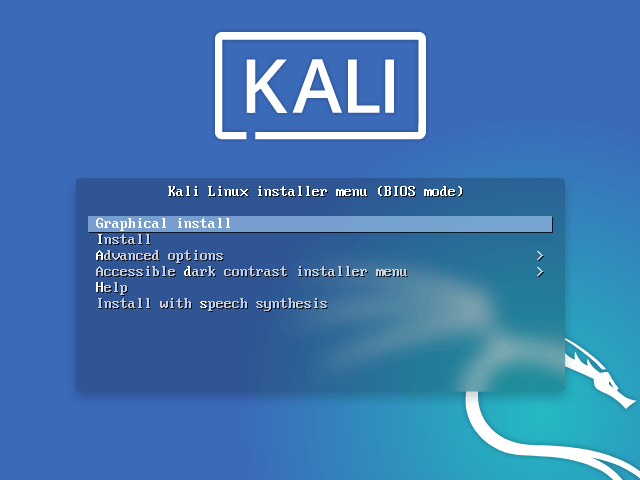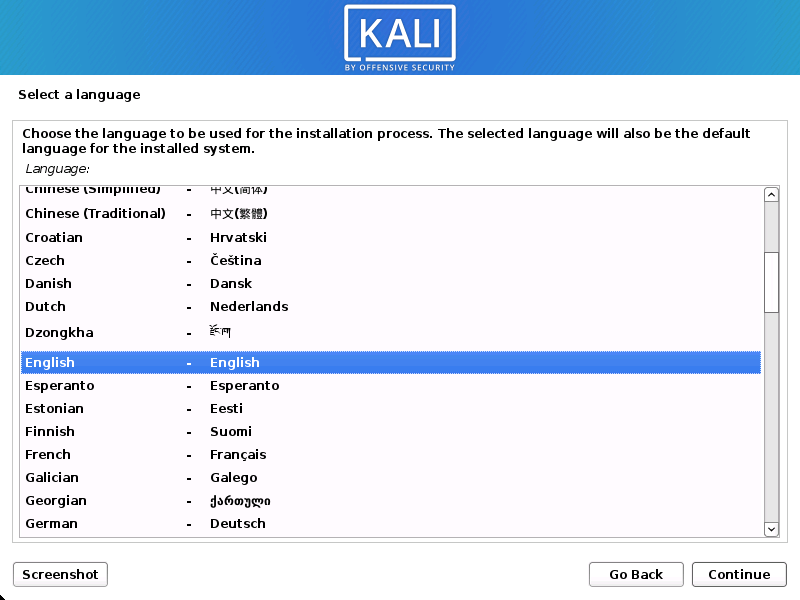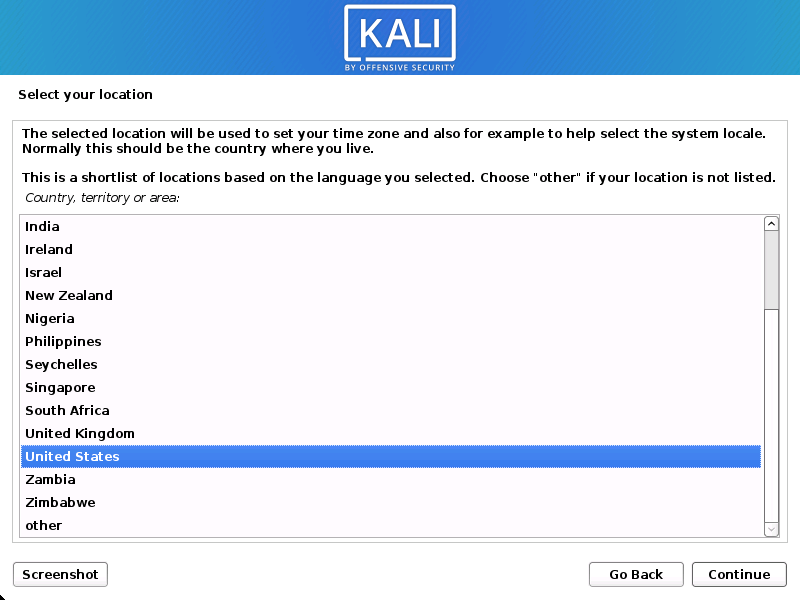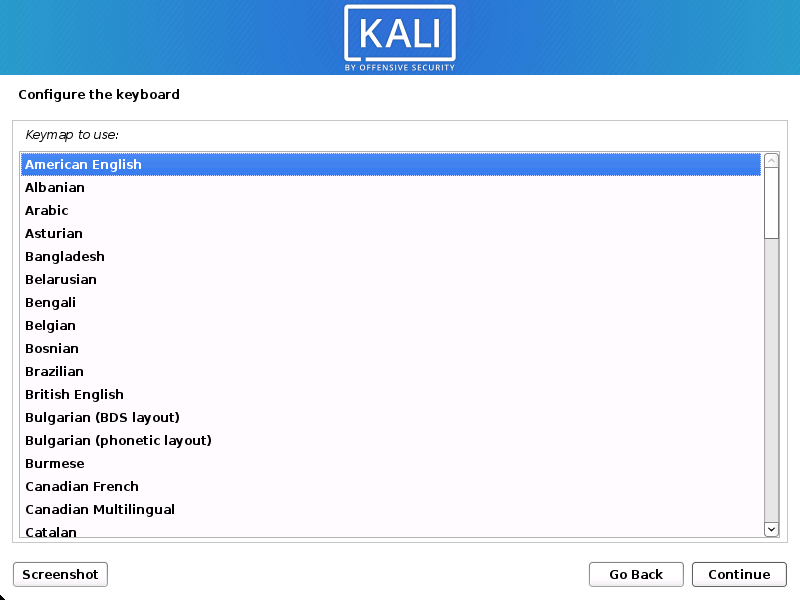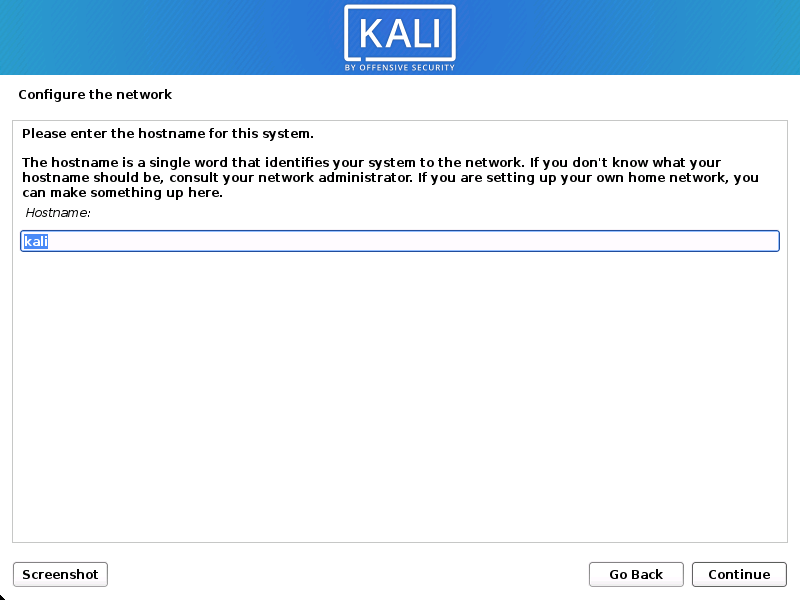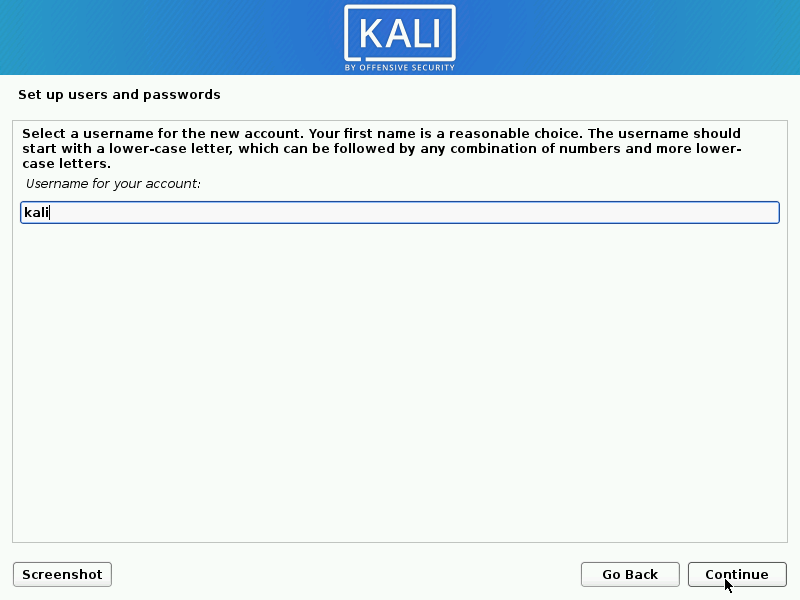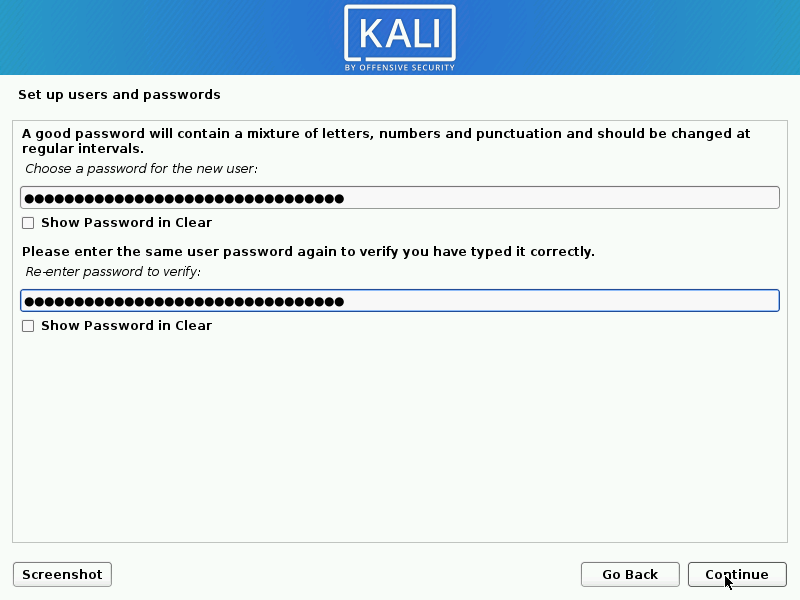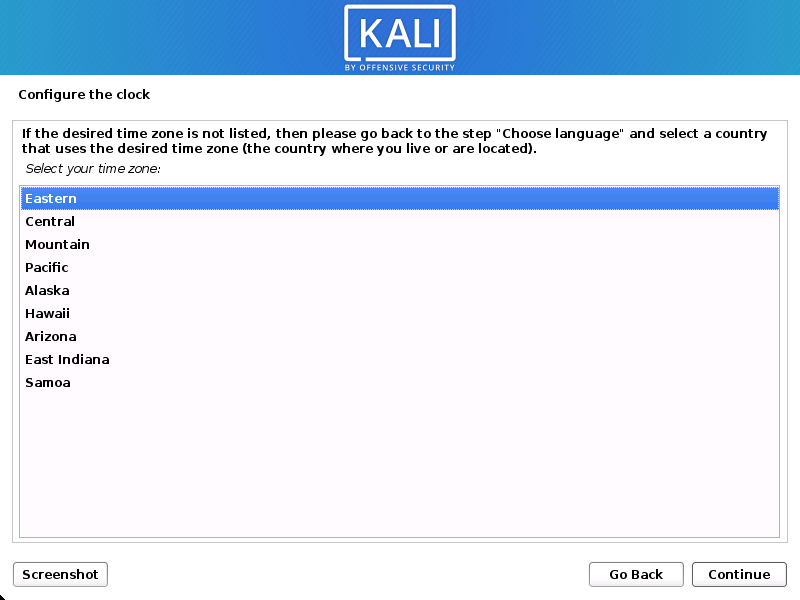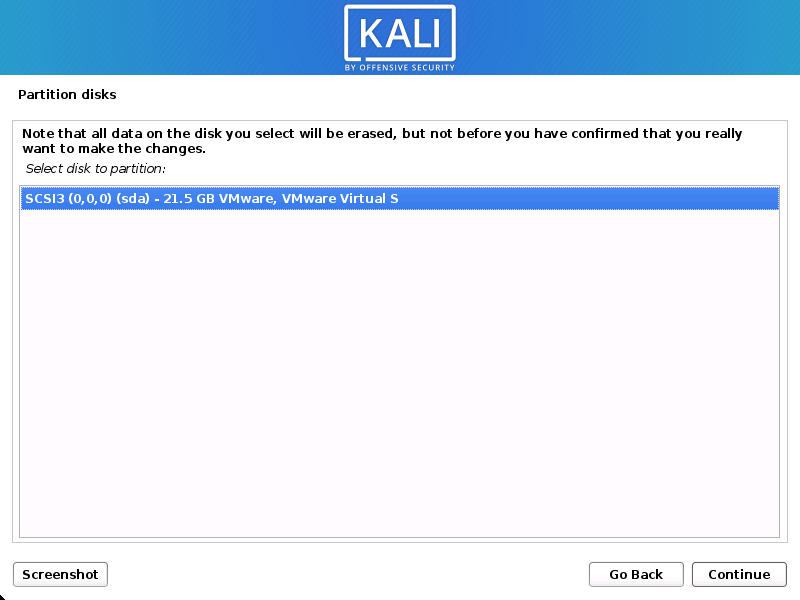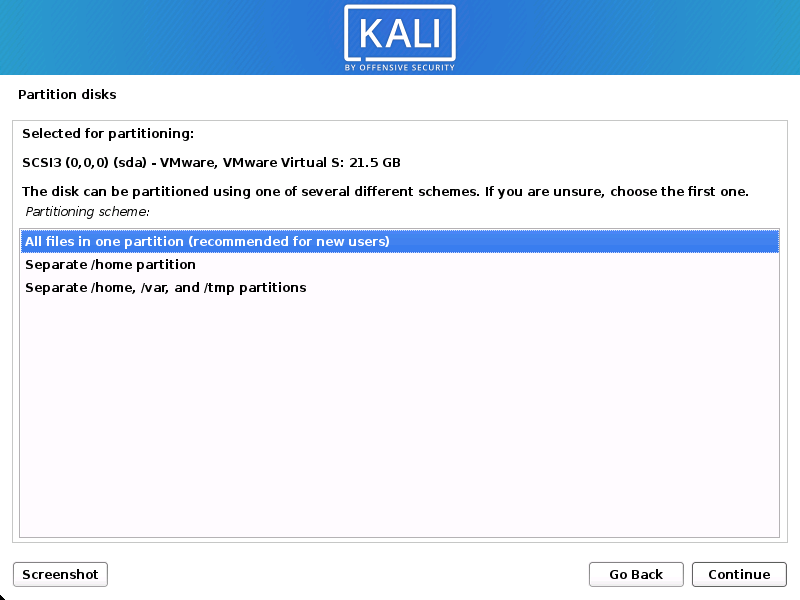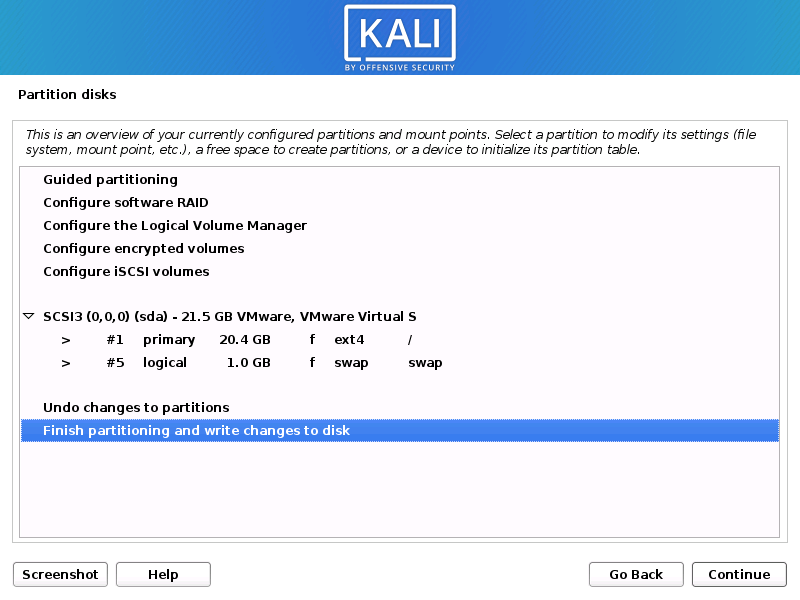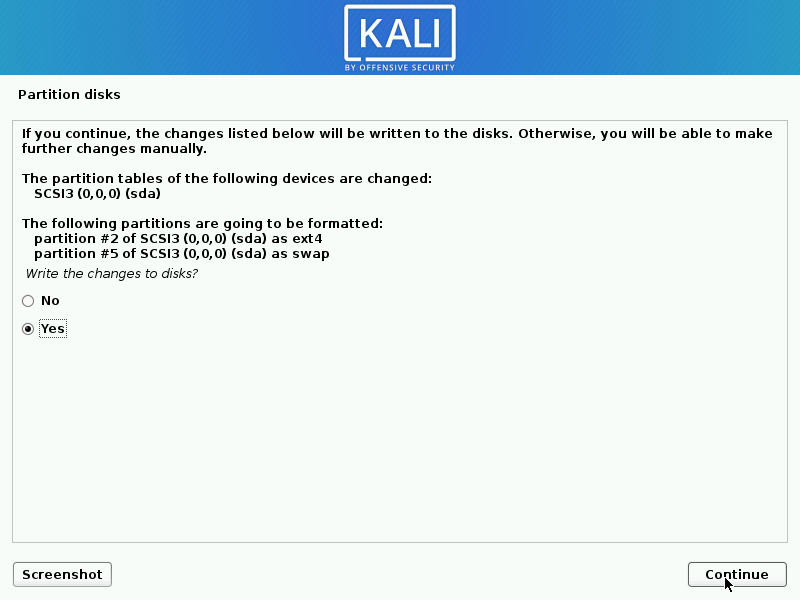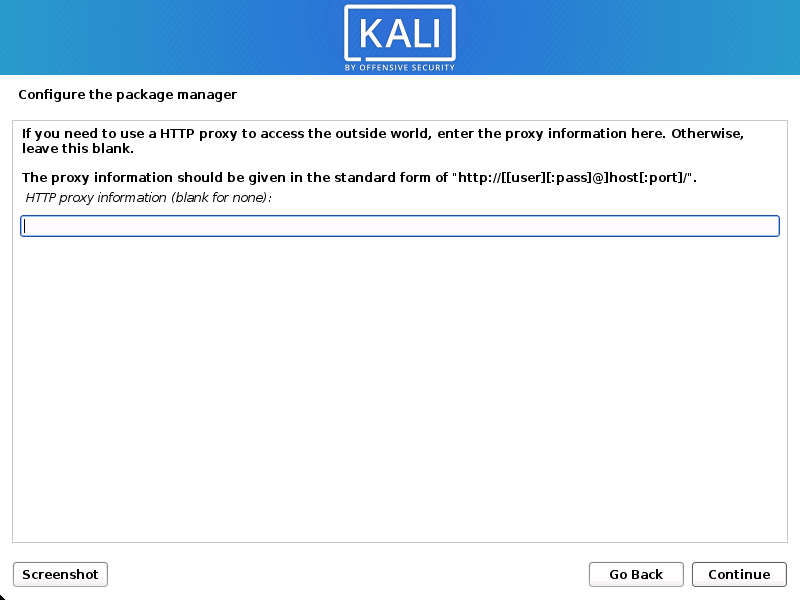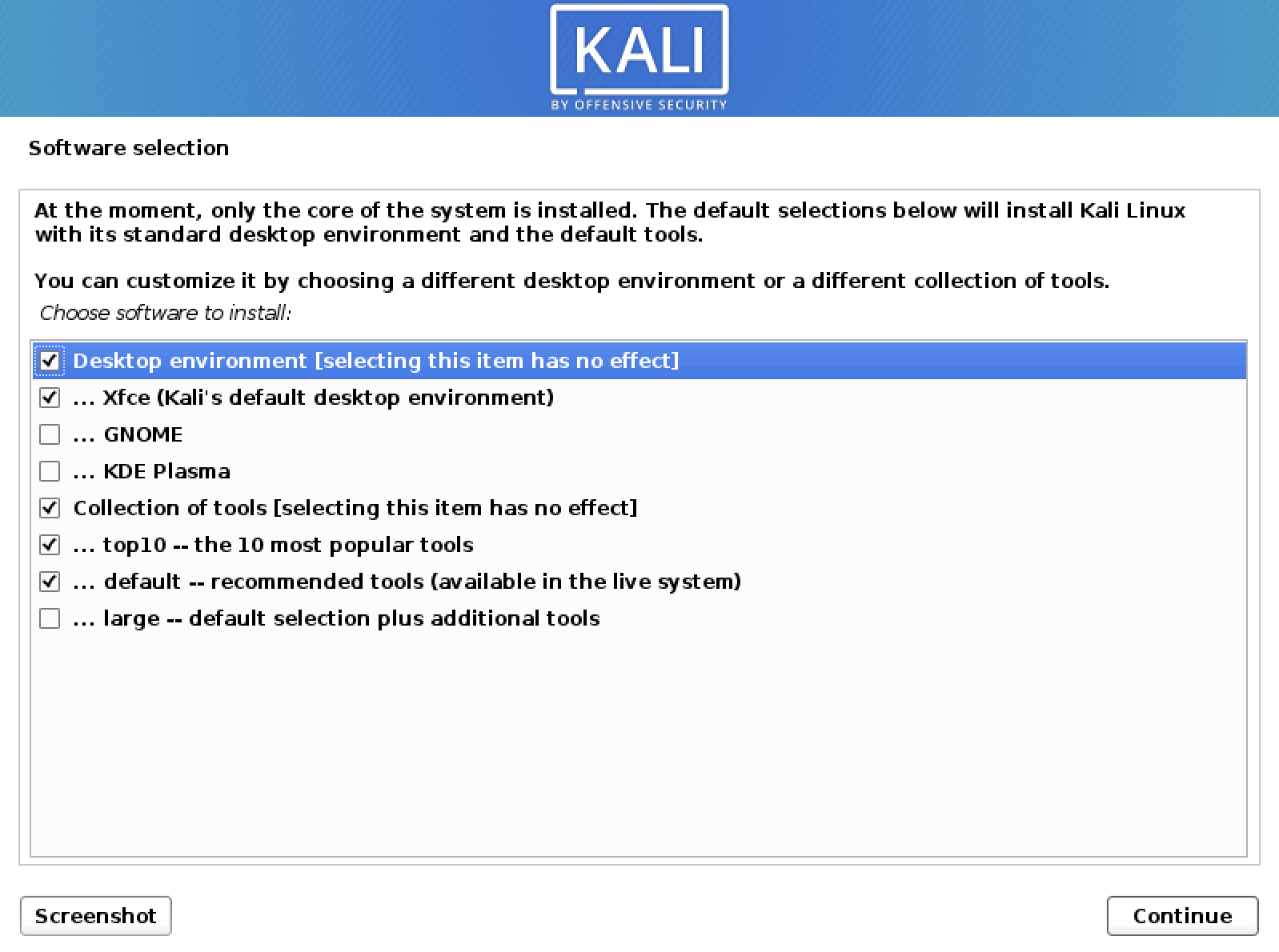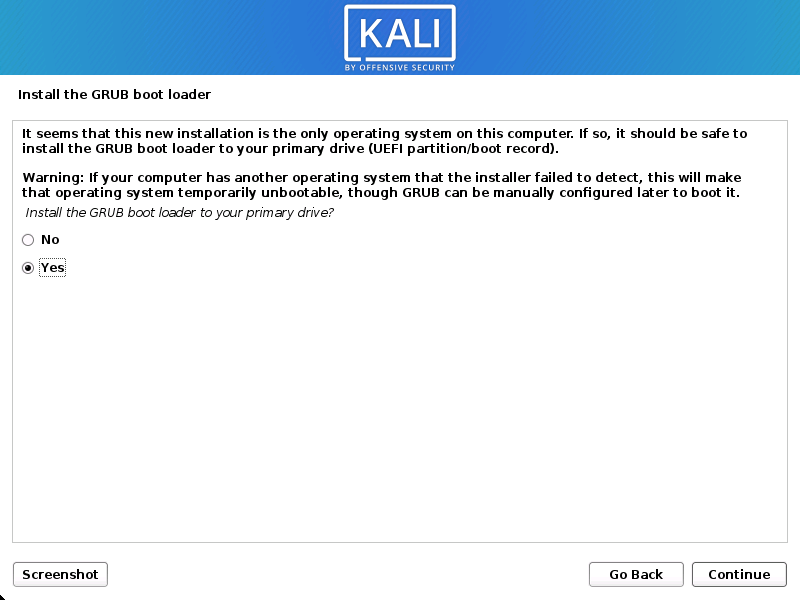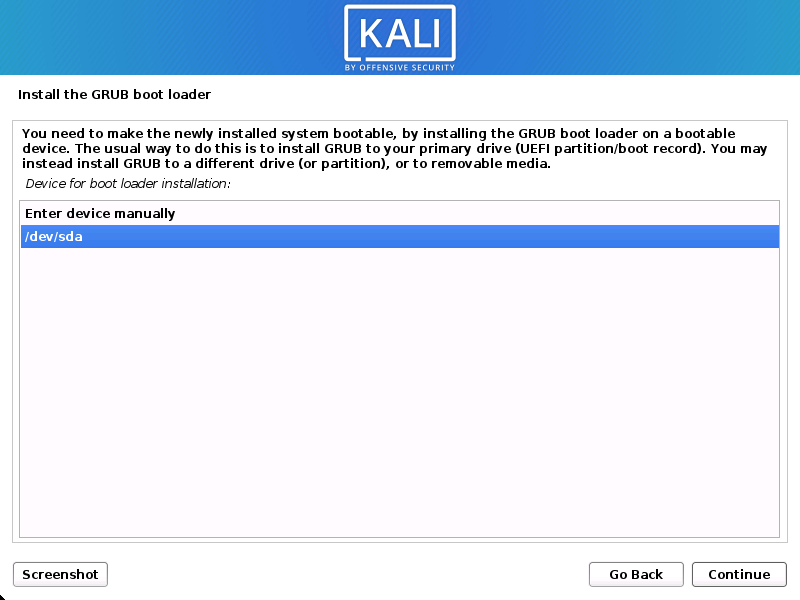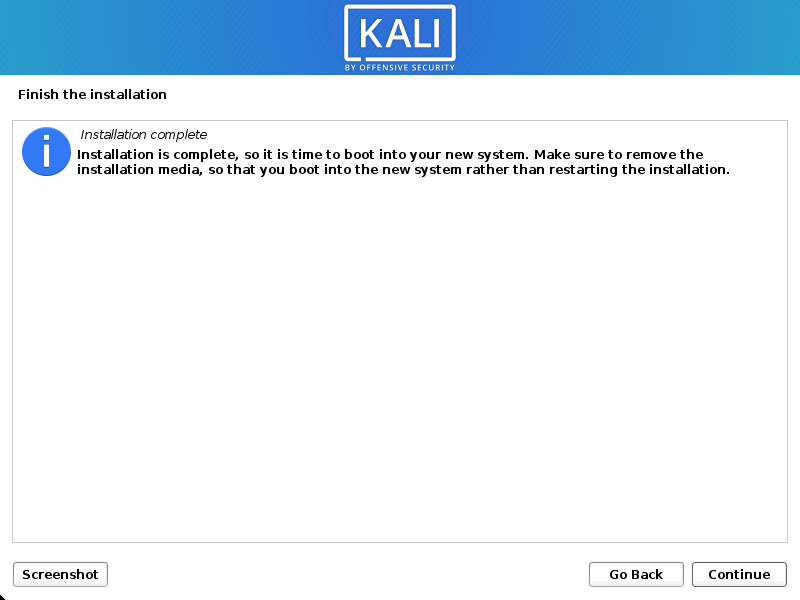- Documentation linux kali linux
- System Requirements
- Installation Prerequisites
- Preparing for the Installation
- Kali Linux Installation Procedure
- Language
- Network
- User Accounts
- Clock
- Encrypted LVM
- Proxy Information
- Metapackages
- Boot Information
- Reboot
- Post Installation
- Documentation linux kali linux
- Is Kali Linux Right For You?
- Summary
Documentation linux kali linux
Installing Kali Linux (single boot) on your computer is an easy process. This guide will cover the basic install (which can be done on bare metal or guest VM), with the option of encrypting the partition. At times, you may have sensitive data you would prefer to encrypt using Full Disk Encryption (FDE). During the setup process you can initiate an LVM encrypted install on either Hard Disk or USB drives.
First, you’ll need compatible computer hardware. Kali Linux is supported on amd64 (x86_64/64-Bit) and i386 (x86/32-Bit) platforms. Where possible, we would recommend using the amd64 images. The hardware requirements are minimal as listed in the section below, although better hardware will naturally provide better performance. You should be able to use Kali Linux on newer hardware with UEFI and older systems with BIOS.
Our i386 images, by default use a PAE kernel, so you can run them on systems with over 4 GB of RAM.
In our example, we will be installing Kali Linux in a fresh guest VM, without any existing operating systems pre-installed. We will explain other possible scenarios throughout the guide.
System Requirements
The installation requirements for Kali Linux will vary depending on what you would like to install and your setup. For system requirements:
- On the low end, you can set up Kali Linux as a basic Secure Shell (SSH) server with no desktop, using as little as 128 MB of RAM (512 MB recommended) and 2 GB of disk space.
- On the higher end, if you opt to install the default Xfce4 desktop and the kali-linux-default metapackage, you should really aim for at least 2 GB of RAM and 20 GB of disk space.
- When using resource-intensive applications, such as Burp Suite, they recommend at least 8 GB of RAM(and even more if it large web application!) or using simultaneous programs at the same time.
Installation Prerequisites
This guide will make also the following assumptions when installing Kali Linux:
- Using the amd64 installer image.
- CD/DVD drive / USB boot support.
- Single disk to install to.
- Connected to a network (with DHCP & DNS enabled) which has outbound Internet access.
We will be wiping any existing data on the hard disk, so please backup any important information on the device to an external media.
Preparing for the Installation
Download Kali Linux (We recommend the image marked Installer).
Burn The Kali Linux ISO to DVD or image Kali Linux Live to USB drive. (If you cannot, check out the Kali Linux Network Install).
Backup any important information on the device to an external media.
Ensure that your computer is set to boot from CD/DVD/USB in your BIOS/UEFI.
Kali Linux Installation Procedure
- To start your installation, boot with your chosen installation medium. You should be greeted with the Kali Linux Boot screen. Choose either Graphical install or Install (Text-Mode). In this example, we chose the Graphical install.
If you’re using the live image instead, you will see another mode, Live, which is also the default boot option.
Language
- Select your preferred language. This will be used for both the setup process and once you are using Kali Linux.
- Specify your geographic location.
- Select your keyboard layout.
Network
- The setup will now probe your network interfaces, looks for a DHCP service, and then prompt you to enter a hostname for your system. In the example below, we’ve entered kali as our hostname.
If there is no network access with DHCP service detected, you may need to manually configure the network information or do not configure the network at this time.
- If there isn’t a DHCP service running on the network, it will ask you to manually enter the network information after probing for network interfaces, or you can skip.
- If Kali Linux doesn’t detect your NIC, you either need to include the drivers for it when prompted, or generate a custom Kali Linux ISO with them pre-included.
- If the setup detects multiple NICs, it may prompt you which one to use for the install.
- If the chosen NIC is 802.11 based, you will be asked for your wireless network information before being prompted for a hostname.
- You may optionally provide a default domain name for this system to use (values may be pulled in from DHCP or if there is an existing operating systems pre-existing).
User Accounts
- Next, create the user account for the system (Full name, username and a strong password).
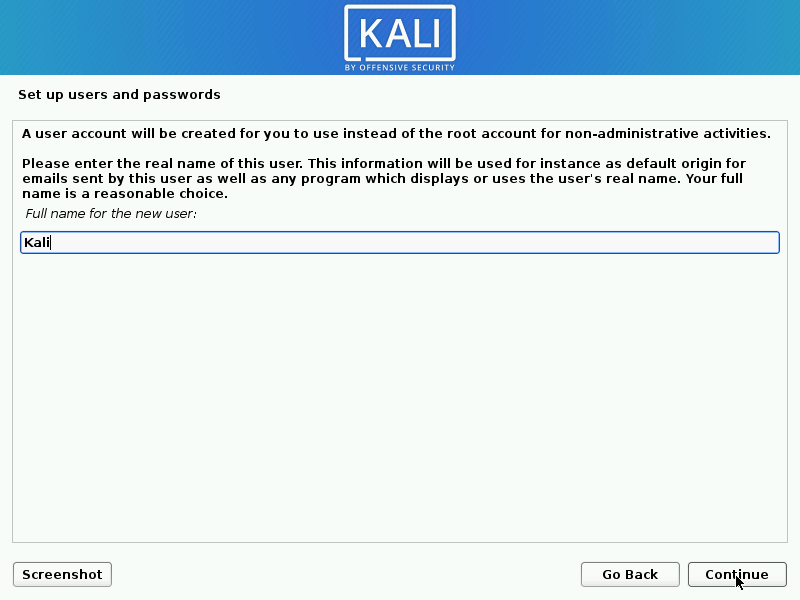
Clock
- The installer will now probe your disks and offer you various choices, depending on the setup.
In our guide, we are using a clean disk, so we have four options to pick from. We will select Guided — the entire disk, as this is the single boot installation for Kali Linux, so we do not want any other operating systems installed, so we are happy to wipe the disk.
If there is an pre-existing data on the disk, you will have have an extra option (Guided — use the largest continuous free space) than the example below. This would instruct the setup not to alter any existing data, which is perfect for for dual-booting into another operating system. As this is not the case in this example, it is not visible.
Experienced users can use the “Manual” partitioning method for more granular configuration options, which is covered more in our BTRFS guide.
If you want to encrypt Kali Linux, you can enable Full Disk Encryption (FDE), by selecting Guided — used entire disk and setup encrypted LVM. When selected, later on in the setup (not in this guide) prompt you to enter a password (twice). You will have to enter this password every time you start up Kali Linux.
- Select the disk to be partitioned.
- Depending on your needs, you can choose to keep all your files in a single partition — the default — or to have separate partitions for one or more of the top-level directories.
If you’re not sure which you want, you want “All files in one partition”.
- Next, you’ll have one last chance to review your disk configuration before the installer makes irreversible changes. After you click Continue, the installer will go to work and you’ll have an almost finished installation.
Encrypted LVM
If enabled in the previous step, Kali Linux will now start to perform a secure wipe of the hard disk, before asking you for a LVM password.
Please sure a strong password, else you will have to agree to the warning about a weak passphrase.
This wipe may take “a while” (hours) depending on the size and speed of the drive.
If you wish to risk it, you can skip it.
Proxy Information
- Kali Linux uses a central repository to distribute applications. You’ll need to enter any appropriate proxy information as needed.
Metapackages
If network access was not setup, you will want to continue with setup when prompt.
If you are using the Live image, you will not have the following stage.
- Next you can select which metapackages you would like to install. The default selections will install a standard Kali Linux system and you don’t really have to change anything here.
Please refer to this guide if you prefer to change the default selections.
Boot Information
- Next confirm to install the GRUB boot loader.
- Select the hard drive to install the GRUB bootloader in (it does not by default select any drive).
Reboot
- Finally, click Continue to reboot into your new Kali Linux installation.
Post Installation
Now that you’ve completed installing Kali Linux, it’s time to customize your system.
The General Use section has more information and you can also find tips on how to get the most out of Kali Linux in our User Forums.
Updated on: 2021-Sep-27
Author: gamb1t
Источник
Documentation linux kali linux
Kali Linux is specifically geared to meet the requirements of professional penetration testing and security auditing. To achieve this, several core changes have been implemented in Kali Linux which reflect these needs:
Network services disabled by default: Kali Linux contains systemd hooks that disable network services by default. These hooks allow us to install various services on Kali Linux, while ensuring that our distribution remains secure by default, no matter what packages are installed. Additional services such as Bluetooth are also blacklisted by default.
Custom Linux kernel: Kali Linux uses an upstream kernel, patched for wireless injection.
A minimal and trusted set of repositories: given the aims and goals of Kali Linux, maintaining the integrity of the system as a whole is absolutely key. With that goal in mind, the set of upstream software sources which Kali uses is kept to an absolute minimum. Many new Kali users are tempted to add additional repositories to their sources.list, but doing so runs a very serious risk of breaking your Kali Linux installation.
Is Kali Linux Right For You?
As the distribution’s developers, you might expect us to recommend that everyone should be using Kali Linux. The fact of the matter is, however, that Kali is a Linux distribution specifically geared towards professional penetration testers and security specialists, and given its unique nature, it is NOT a recommended distribution if you’re unfamiliar with Linux or are looking for a general-purpose Linux desktop distribution for development, web design, gaming, etc.
Even for experienced Linux users, Kali can pose some challenges. Although Kali is an open source project, it’s not a wide-open source project, for reasons of security. The development team is small and trusted, packages in the repositories are signed both by the individual committer and the team, and — importantly — the set of upstream repositories from which updates and new packages are drawn is very small. Adding repositories to your software sources which have not been tested by the Kali Linux development team is a good way to cause problems on your system.
While Kali Linux is architected to be highly customizable, do not expect to be able to add random unrelated packages and repositories that are “out of band” of the regular Kali software sources and have it Just Work. In particular, there is absolutely no support whatsoever for the apt-add-repository command, LaunchPad, or PPAs. Trying to install Steam on your Kali Linux desktop is an experiment that will not end well. Even getting a package as mainstream as NodeJS onto a Kali Linux installation can take a little extra effort and tinkering.
If you are unfamiliar with Linux generally, if you do not have at least a basic level of competence in administering a system, if you are looking for a Linux distribution to use as a learning tool to get to know your way around Linux, or if you want a distro that you can use as a general purpose desktop installation, Kali Linux is probably not what you are looking for.
In addition, misuse of security and penetration testing tools within a network, particularly without specific authorization, may cause irreparable damage and result in significant consequences, personal and/or legal. “Not understanding what you were doing” is not going to work as an excuse.
However, if you’re a professional penetration tester or are studying penetration testing with a goal of becoming a certified professional, there’s no better toolkit — at any price — than Kali Linux.
If you are looking for a Linux distribution to learn the basics of Linux and need a good starting point, Kali Linux is not the ideal distribution for you. You may want to begin with Ubuntu, Mint, or Debian instead. If you’re interested in getting hands-on with the internals of Linux, take a look the Linux From Scratch project.
Summary
So, after having read this you should have figured out if Kali Linux is the distribution you were looking for or at least got an idea about your choice.
If still you have not figured it out, here is a summary that will hopefully remove your remaining doubts:
- Kali Linux is made with pentesters and pentesting in mind so, expecting it to fit with your necessity might not be as simple even though it’s completely possible.
- If you are new to Linux or have less experience with command line you might find Kali Linux to be not so user-friendly, even though our developers try to make it as user-friendly as possible some things might be intimidating to you if you are new.
- The developers always try to make Kali Linux as much hardware compatible as possible but, still some hardware/s might not work as expected or not work at all. So, its better to research hardware compatibility beforehand rather than breaking your computer later.
- If you are installing Kali Linux for the first time, it is recommended to install first in Virtual Machine then, after getting familiar with it, you can install it in your own hardware.
Hopefully, now you know if you need to install Kali Linux or not. If you have decided to install Kali Linux then, we welcome you to our community.
If not, then see you later, and remember always “Try Harder”.
Updated on: 2021-Sep-27
Author: g0tmi1k
Источник
